Graham Reid | | 4 min read
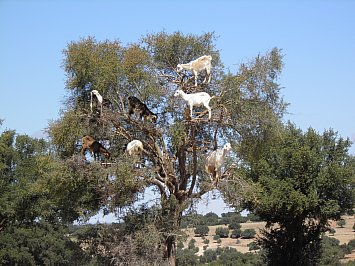
So you will be seeing the goats in the trees, said the man in the marketplace. I laughed because I'd clearly misheard. I thought he'd said, “goats in the trees”.
The other man patting a pile of bright
yellow spice back into an attractive pyramid stopped and turned to
me, “Oh yes, there will be goats up in the trees. You will see
them, I guarantee.”
“You guarantee it?”
“Oh yes, there are a lot of goats . . . and not so many trees,” he announced with satisfied smile.
I'm still not sure about the first point, but he was certainly right on the second.
The road from Marrakech through Sidi Moktar to the wind-blown Atlantic coast of Morocco is largely bereft of vegetation, and people. This arid, low rolling plain – through which an excellent sealed road bisects the scuffed-yellow dusty desert – is occasionally punctuated by small villages, a few pitstops selling food, handcrafts and trinkets, and a couple of large towns. But mostly there is nothing, or at least not much, on either side of the highway. Certainly not many trees.
The straight road has overcrowded buses and stacked-high trucks swerving around donkey-drawn carts heading for local markets, boys on cheap motorcycles weaving like sidewinders across the lane and old men in hooded cloaks sitting in the dust on the roadside waiting for . . . For whatever old Moroccan men wait in throat-choke dust for.
The rock-strewn desert stretches towards the horizon beneath a pale blue sky intermittently interrupted by wispy and half-hearted clouds. Outside it's 35 degrees and up ahead the road disappears in a shimmer of a blue heat haze. It looks like we are driving into a sky-pale ocean constantly retreating before us.
Near the crossroad town of Douar Oulad Brahim where men stand hopefully holding up brightly coloured carpets for sale, we pass an impressive new building which catches my eye. It has minarets and those exotic architectural contours so familiar in this region so I ask, “a new mosque?”
The driver glances sideways. “No. Supermarket”.
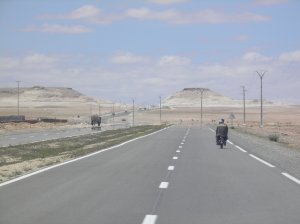
Doubtless they too saw the goats in the trees, because suddenly, just past the busy town of Sidi Moktar – standing confidently on thin branches of stumpy bushes – there they were. Fat goats, half a dozen of them in one small and almost leaf-bare bush. And then there are more. And more.
As the man said, not so many trees and a lot of goats in them.
We pull off into a small factory-cum-shop, the hub of the Assouss Argane collective, and get the strange story behind tree-climbing goats.
This is land of argan, a walnut-sized nut on these resilient trees which only grow in this forbidding and often inhospitable climate. Goats climb the trees for them, and the story gets strange.
Traditionally, nuts which had passed through the goats were collected and then, through labour-intensive cracking and pounding were turned into a smooth paste from which oil was extracted. This oil was, and still is, highly prized by the Berber people for its healthy and healing properties.
On hearing this story my wife and I look at each other and silently mouth “Bali” in private amusement.
The previous year while driving near Ubud we'd stopped at a coffee plantation for a break and sampled the rather odd-tasting luwak coffee which seemed to be their speciality. As we enjoyed the beverage, the view and the company it suddenly struck us this place – the painting of the civet cat on the wall was the clue – collected beans which had passed through our furry friend and they used that for their particular blend.
You have to ask: Who first looked at the droppings of a wild cat and thought, “That bean in there might taste good if it was crushed and mixed with hot water”?
That's the same kind of mentality which, at the dawn of time, cracked open an oyster, observed the shapeless fleshy mess inside and had the idea that this pulpy stuff would be delicious with a pinch of balsamic vinegar and served on the half-shell with a smattering of sea salt and a crisp chardonnay.
The same thinking that had Berbers going through goat droppings too, I guess. Forgivably though, because out here there are few other distractions than goat droppings.
That said, the Bali coffee was decent enough and I love raw oysters with balsamic. And I became a quick convert to argan oil as a nutty and delicious flavoring on a salad.
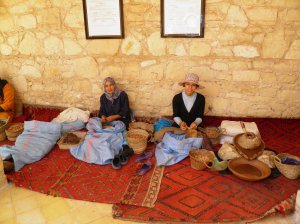
Day after day these cheery ladies sit and grind up the argan nuts using large stones.
Actually I suspect out the back is a large and mechanized industry and this front-of-house stuff is for exotic show, because any time-and-motion analysis would say this is far too labour intensive to be productive on any level. The woman on the cellphone might have been talking to her distributor in Paris because the very rare argan oil is the fashionable beauty treatment du jour.
Its use as a soothing massage oil, the promises of anti-aging ingredients, the effectiveness for healthy hair and skin and so on come with every story about it . . . but none of that I can vouch for. However the blend of argan oil, honey and almond for cooking is a locked-in guarantee of flavor.
We bought some bottles and use it sparingly on salads, especially when we have guests who always comment favorably about the slightly nutty but sweet taste.
If we're looking for a conversation starter – or stopper – after dinner we mention the Balinese coffee we have, which someone invariably wants to try.
It's a bit thin and slightly bitter, and few ever finish a cup. But they do ask where it came from.
“Actually there's a funny story about both the oil and the coffee. It seems . . .”

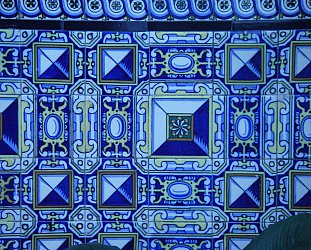
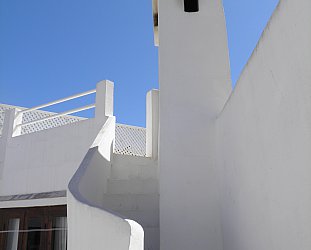

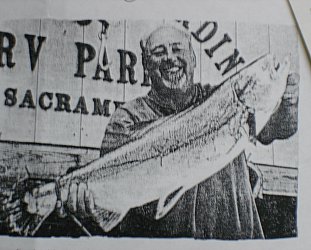

![Indio: El Tesoro de los Inocentes [Bingo Fuel]](https://elsewhere.scdn3.secure.raxcdn.com/images/311x250/articles/indio.jpg)
post a comment